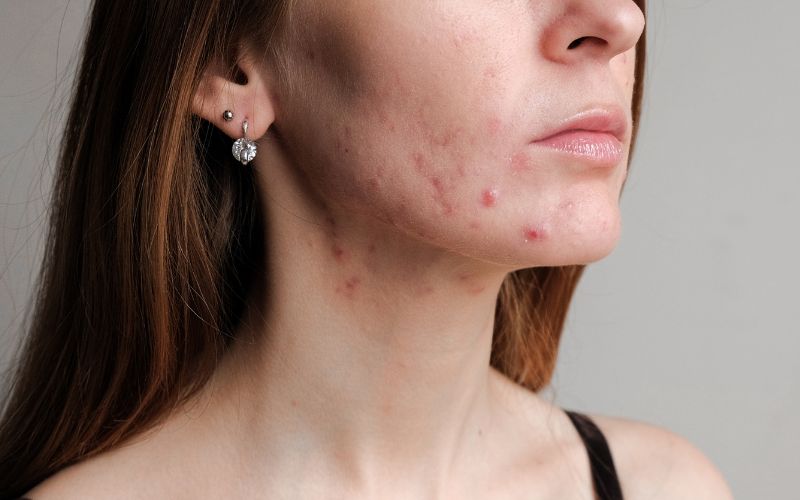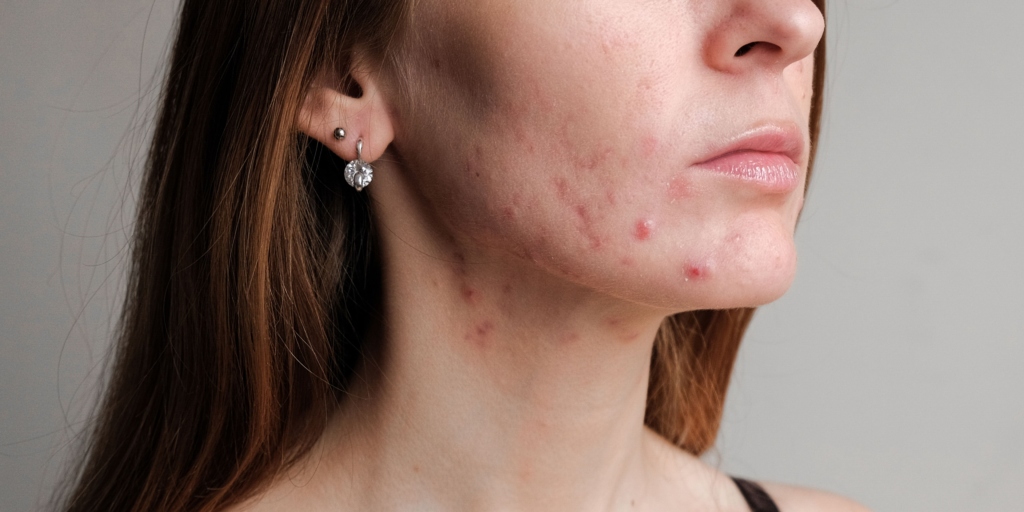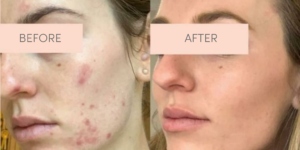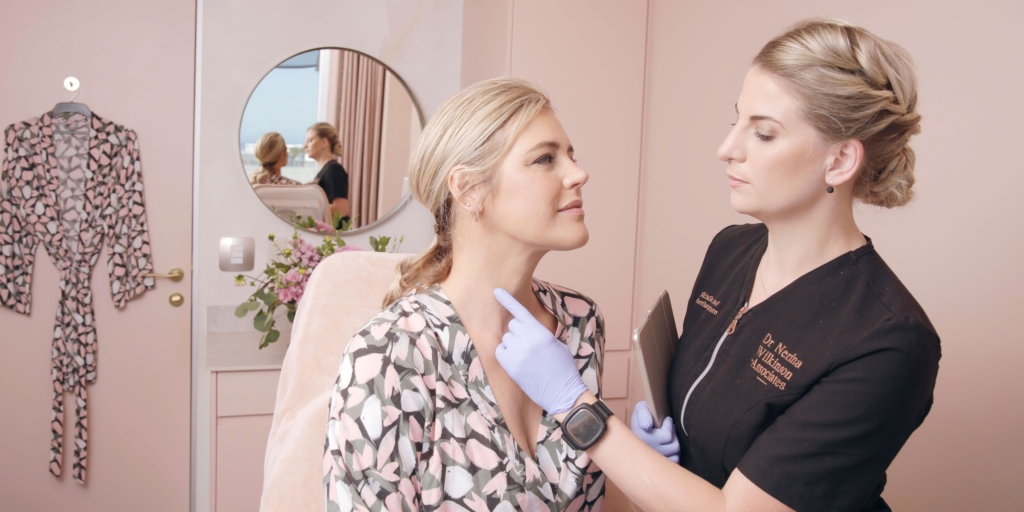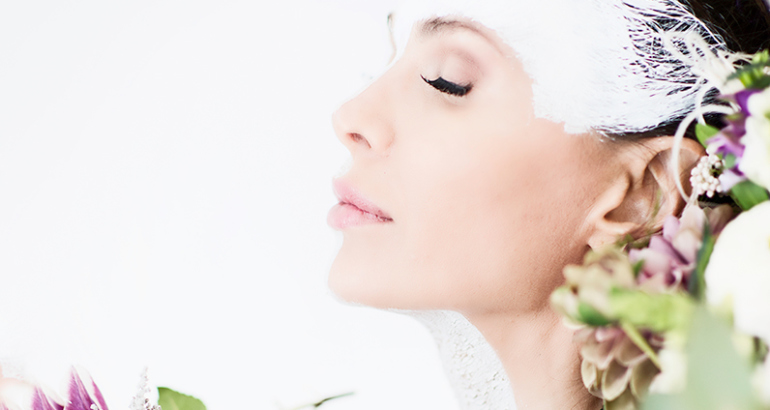by Senior Skincare Specialist, Kim van Zyl
Let’s talk about the ultimate party crasher – acne! Acne is like the uninvited guests that simply don’t want to leave! Whether you’re fighting this blemish war during your teenage years or as an adult, we’re here to equip you with all the knowledge you need to kick acne’s butt.
Table of contents
UNDERSTANDING ACNE
Imagine your skin as a beautiful canvas, but those pesky hair follicles can get clogged up like tiny pipes with too much oil and dead skin cells. Our skin naturally produces oil to keep things moisturized and healthy, but sometimes, it goes a little overboard. And guess what? These clogged-up follicles become a cozy home for bacteria, causing red, swollen, and sometimes painful skin. We call these blemishes pimples, and they’re not exactly a welcomed addition to our look.
Now, the reasons behind this unwelcome acne party are a bit complicated, but it all starts with those wild hormones. Hormones can act up and trigger our oil glands to go into overdrive, and that’s when the clogging begins! It’s like a hormonal riot on your skin!
But fear not! In this blog, we’re going on an epic journey into the world of acne, delving deep into its different types, causes, and recommended treatments. Armed with this knowledge, we’ll unlock the secrets of effective treatments, from ancient remedies to cutting-edge therapies, to restore your skin’s natural harmony.
Alright, let’s break down the basics of acne in a language we can all understand:
THE DIFFERENT TYPES OF ACNE
Picture it like an adventure park for blemishes on your skin! You’ve got whiteheads and blackheads – those pesky little dots. If the clog is deeper, you get bigger, swollen bumps called cysts or nodules. Yep, it’s a real party on your face! Let’s explain them in detail.
Whiteheads (Closed Comedones)
Whiteheads appear as small, flesh-coloured, or white bumps on the skin’s surface. They occur when hair follicles become clogged with oil and dead skin cells, and the pore remains closed.
Blackheads (Open Comedones)
Blackheads are small, dark-coloured bumps on the skin’s surface. They form when hair follicles become clogged with oil and dead skin cells, but the pore remains open, allowing the clog to oxidize and darken.
Papules
Papules are small, raised, red or pink bumps on the skin. They occur when the walls around the hair follicles break down, leading to inflammation and mild irritation.
Pustules
Pustules are similar to papules but filled with pus, giving them a white or yellowish center. They appear as red bumps with a white or yellow head on top.
Nodules
Nodules are large, painful, solid lumps beneath the skin. They are deeper and more severe than papules and pustules.
Cysts
Cysts are large, painful, pus-filled lumps that can be felt beneath the skin’s surface. They are the most severe form of acne.
THE DIFFERENT GRADES OF ACNE
Over and above the fact that there are different types of acne, acne also comes in different grades. There’s mild acne with minor breakouts, then moderate acne with more action going on, and it goes all the way up to severe acne with a full-blown breakout bonanza! Let’s take a quick look into the different grades of acne:
Grade 1 (Mild Acne)
Mild acne is characterized by minor breakouts, mostly consisting of whiteheads and blackheads with occasional small papules or pustules.
Grade 2 (Moderate Acne)
Moderate acne is characterized by more lesions, including an increased number of papules, pustules, and occasional nodules.
Grade 3 (Moderately Severe Acne)
Moderately severe acne is characterized by numerous papules, pustules, and nodules, with a greater area of involvement.
Grade 4 (Severe Acne)
Severe acne is characterized by widespread and severe acne with a large number of papules, pustules, and nodules, and significant inflammation.
MOST COMMON CAUSES OF ACNE
Turns out, some folks are more likely to get acne than others. Below are the factors that can play a role.
- Hormonal Changes: Blame it on the hormones! Puberty, periods, pregnancy – they all bring hormonal drama that can lead to acne. Hormonal changes can be like hosting a hormone disco in your body. Fluctuations in androgens, those male sex hormones (yep, even ladies have ’em), can lead to acne mischief. They tell our skin’s oil factories to pump out more sebum (oil), and that’s when the clogging trouble begins!
- Family History: If your parents or siblings dealt with acne, you might be on the guest list too. Thanks, genetics!
- Skin Type: If you’ve got oily or combination skin, you’re more likely to get a VIP pass to the acne party.
- Comedogenic Products: Watch out for skincare products that love to clog pores. Opt for the non-comedogenic superheroes!
- Diet: Yeah, even what you eat can mess with your skin. Refined carbs, sugars, and dairy products can be party crashers for some.
- Stress: Stress likes to gatecrash too, messing with your hormones and stirring up acne trouble.
- Medications: Some medications can be real party poopers for your skin. Hormonal meds, steroids, antidepressants – they can all mess with your acne situation.
- Environmental Factors: Pollutants and certain environments can invite acne over for a skin soiree.
- Friction: Gear like helmets and tight clothing can rub your skin the wrong way and cause acne in specific areas.
- Hair and Skincare: Sometimes, your hair products and harsh skincare habits are guilty of starting the acne party.
EFFECTIVE WAYS TO TREAT AND PREVENT ACNE
Chemical Peels remain the gold standard in the treatment and prevention of acne and acne-prone skin. Why? Because it works! Let’s take a deeper look.
TREATING ACNE WITH CHEMICAL PEELS
Alright, fellow skincare warriors, let’s get ready to battle acne with some zesty chemical peels! Picture this: your skin is about to undergo a rejuvenating magic trick. Let’s dive into how chemical peels work and how they can benefit individuals with acne-prone skin:
The Process:
The Chemical Solution:
The chemical solution used in the peel is carefully chosen based on your skin type and the specific concerns you want to address. Common ingredients include alpha hydroxy acids (AHAs) like glycolic acid and lactic acid, beta hydroxy acids (BHAs) like salicylic acid, and trichloroacetic acid (TCA). These acids work by gently exfoliating the outer layer of the skin, helping to remove dead skin cells, excess oil, and debris that can clog pores and contribute to acne.
One of our top chemical peels for the treatment of acne is the Acnelan Peel as it offers a cross-cutting approach to address the numerous factors that trigger acne, combining an intensive in-clinic chemical peel treatment for acne and acne-prone skin with a home care product (ACNE 1), specifically designed to enhance the effect of the treatment.
Exfoliation:
As the chemical solution is applied to your skin, it starts to exfoliate the outermost layer of dead skin cells. This exfoliation process encourages the shedding of damaged skin cells, revealing fresher, healthier skin underneath. By removing the surface layer, chemical peels can help improve skin texture, reduce the appearance of acne scars, and enhance overall skin radiance.
Penetration:
Depending on the type of chemical peel and its depth, the solution can penetrate into the deeper layers of the skin. This stimulates collagen production, which is essential for skin elasticity and firmness. The increased collagen production can also help reduce the appearance of fine lines and wrinkles, giving your skin a more youthful look.
Unclogging Pores:
Chemical peels, especially those containing salicylic acid, are particularly effective for treating acne-prone skin. Salicylic acid is oil-soluble, meaning it can penetrate deep into the pores and dissolve the excess oil and dead skin cells that clog them. By unclogging the pores, chemical peels help prevent new acne breakouts and minimize the formation of blackheads and whiteheads.
Reducing Inflammation:
Inflammatory acne, such as papules and pustules, can cause redness and swelling. Chemical peels can help reduce inflammation by exfoliating the skin and promoting a smoother skin surface. This can lead to a visible reduction in redness and a more even skin tone.
TREATING ACNE WITH MICRO-NEEDLING
Ah, the magic of micro-needling for acne – let’s unveil the science behind this superhero treatment, the 3D Microneedling treatment (one of our signature approaches) to be exact!
Picture this: as those tiny, ultra-fine needles gently puncture your skin during micro-needling, they create controlled micro-injuries. Now, hold on, don’t panic – these injuries are very small and completely safe!
But here’s where the real magic begins: these micro-injuries trigger your skin’s natural healing response. Your skin goes into superhero mode, activating a complex series of biological processes.
As part of this healing response, your skin releases growth factors and cytokines – these are like the superheroes of the skincare world! These factors work together to stimulate the production of collagen and elastin, the essential proteins responsible for maintaining skin structure, elasticity, and firmness.
So, what does this mean for acne? Well, as your skin heals those micro-injuries, the newly produced collagen and elastin start working their wonders. They help plump up the skin, making it firmer and more resilient.
But wait, there’s more! Micro-needling also triggers the regeneration of new skin cells and fresh tissue. This rejuvenation is a game-changer for acne scars and uneven skin tone. As the damaged skin is replaced by new, healthy tissue, those pesky acne battle scars start to fade away.
Now, let’s talk about clogged pores – the bane of acne-prone skin. The tiny micro-channels created by the needles during micro-needling act as gateways for skincare products. This means that when you apply acne-fighting serums and topical treatments after the micro-needling session, they can penetrate deeper into your skin. It’s like giving them a VIP access pass to target those acne-causing culprits more effectively!
It’s essential to remember that micro needling is not an overnight miracle – like any scientific process, patience is key. Depending on your skin’s condition, you may need multiple sessions to achieve optimal results. But trust us, the wait will be well worth it!
PROFESSIONAL TIPS FOR PREVENTING AND MANAGING ACNE
Preventing acne involves a multi-faceted approach that includes proper skincare, a healthy diet, stress management, and other lifestyle factors. Let’s dive into each aspect to help keep those pesky breakouts at bay:
Relook your skincare routine
-
- Cleanse your face twice daily using a gentle, non-comedogenic cleanser to remove dirt, oil, and impurities without stripping your skin.
- Use products with active ingredients like salicylic acid or benzoyl peroxide to unclog pores and reduce acne-causing bacteria.
- Moisturize daily to keep your skin hydrated and balanced, even if you have oily skin.
- Avoid harsh scrubbing or picking at your skin, as it can worsen inflammation and lead to scarring
Make small adjustments to your diet
-
- Limit the consumption of high-glycemic foods like sugary snacks, white bread, and processed carbohydrates, as they can contribute to acne by increasing insulin levels.
- Reduce your intake of dairy products, as some studies suggest a link between dairy and acne.
- Increase your consumption of fruits, vegetables, and foods rich in omega-3 fatty acids, which can help support healthy skin.
Stay hydrated
Drink plenty of water to keep your skin hydrated and help flush out toxins.
Manager you stress
-
- Stress can trigger hormonal imbalances that may lead to acne breakouts. Practice stress-reduction techniques like meditation, deep breathing exercises, yoga, or spending time in nature.
- Get enough sleep to allow your body and skin to regenerate properly.
Avoid heavy make-up
-
- Choose non-comedogenic and oil-free makeup products to avoid clogging your pores.
- Always remove makeup before going to bed to allow your skin to breathe and regenerate overnight.
Keep your hair clean
-
- If you have oily or acne-prone skin, avoid letting oily hair touch your face, as it can transfer oils and exacerbate breakouts.
- Wash your hair regularly to prevent oil and product buildup.
Choose the right SPF
-
- Protect your skin from harmful UV rays by wearing sunscreen with at least SPF 30 daily, even on cloudy days.
- Choose non-comedogenic and oil-free sunscreens to prevent clogged pores.
Exercise regularly
-
- Exercise promotes healthy blood circulation, which can benefit your skin by delivering essential nutrients and oxygen.
- After exercising, cleanse your face to remove sweat and bacteria.
Avoid smoking and excessive alcohol
Smoking and heavy alcohol consumption can contribute to skin inflammation and worsen acne.
MANAGING ACNE PROFESSIONALLY
Alright, that’s the scoop on acne, friends! Armed with this knowledge and a healthy dose of humor, let’s kick acne’s butt and say goodbye to those pesky party crashers! You’ve got this, and we’re here to cheer you on in your epic battle for clearer, blemish-free skin.
Contact us to schedule your VISIA Skin Analysis consultation today and together, we’ll conquer acne and journey into a brighter, happier tomorrow.
Written by Senior Skincare Specialist, Kim van Zyl

